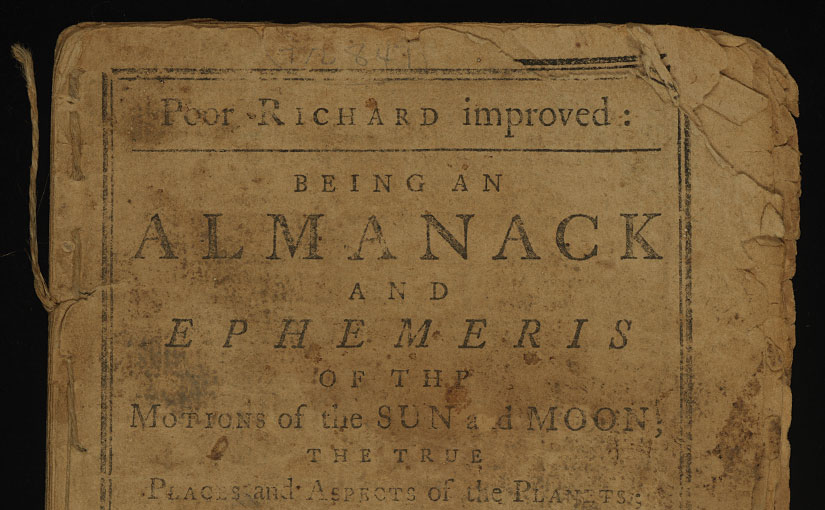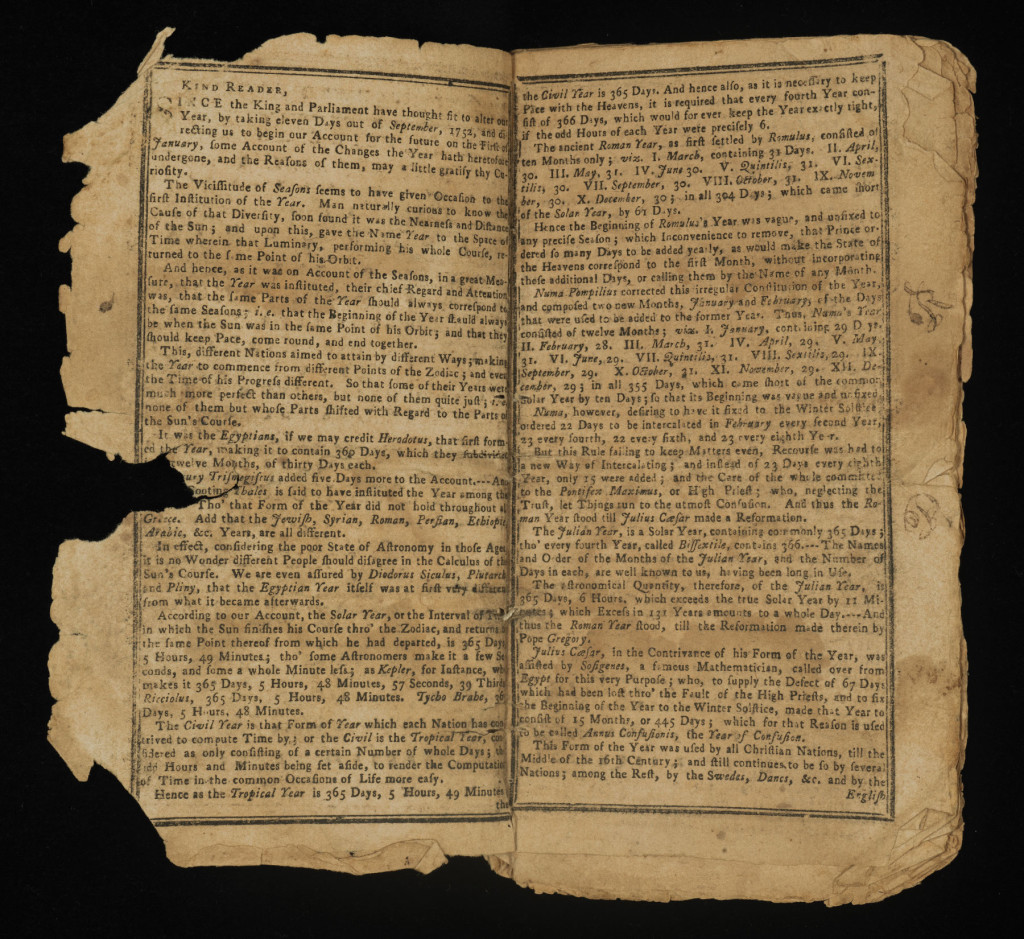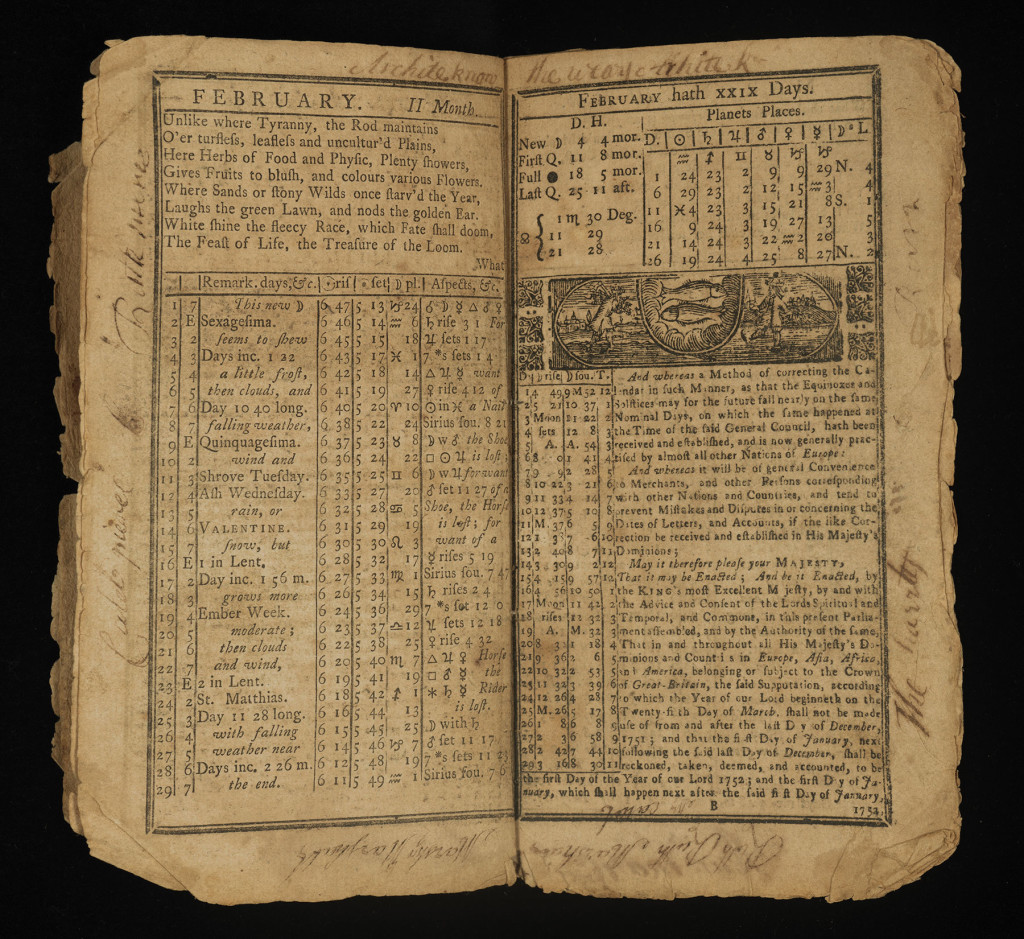In 1582, Pope Gregory XIII reformed the Julian calendar in order to bring the date for celebrating Easter closer in line with the date the early Church had celebrated it. He removed 10 days, skipping from October 4 to October 15, 1582, established February 29 as the official day to be added during a leap year, revised how leap years were determined, and also set January 1 as the first day of the year.
Although most Catholic countries adopted these reforms after they were enacted in 1582 by the papal bull Inter gravissimas, Protestant and Orthodox countries resisted. England and her colonies did not adopt the Gregorian calendar until almost two centuries later as this excerpt from the 1752 edition of Poor Richard Improved, an almanac published by Benjamin Franklin, explains.



